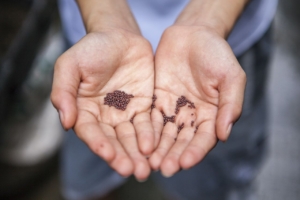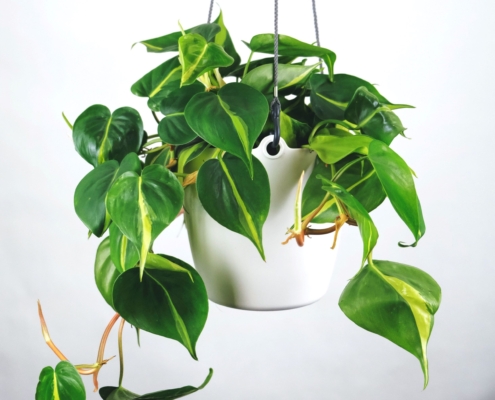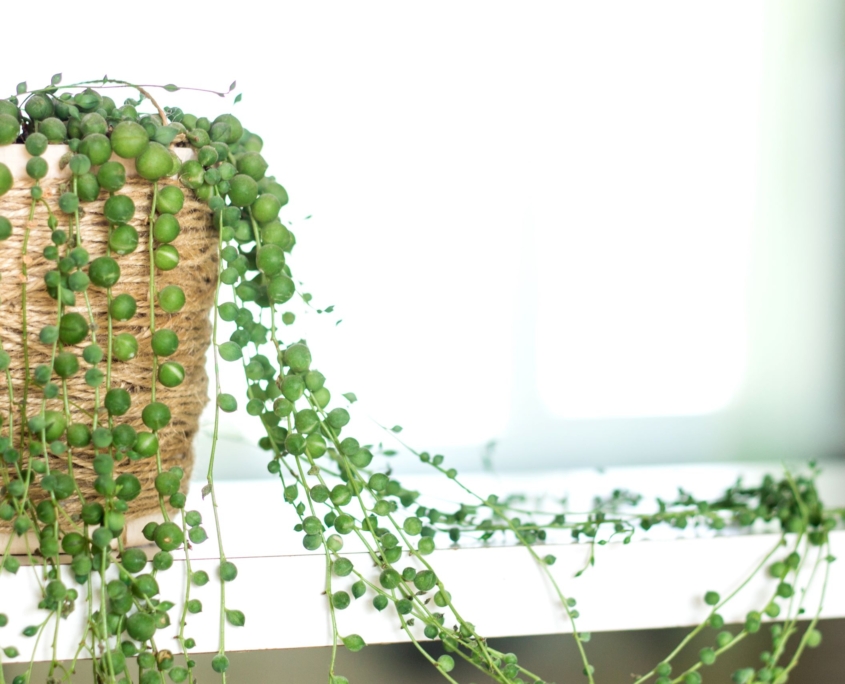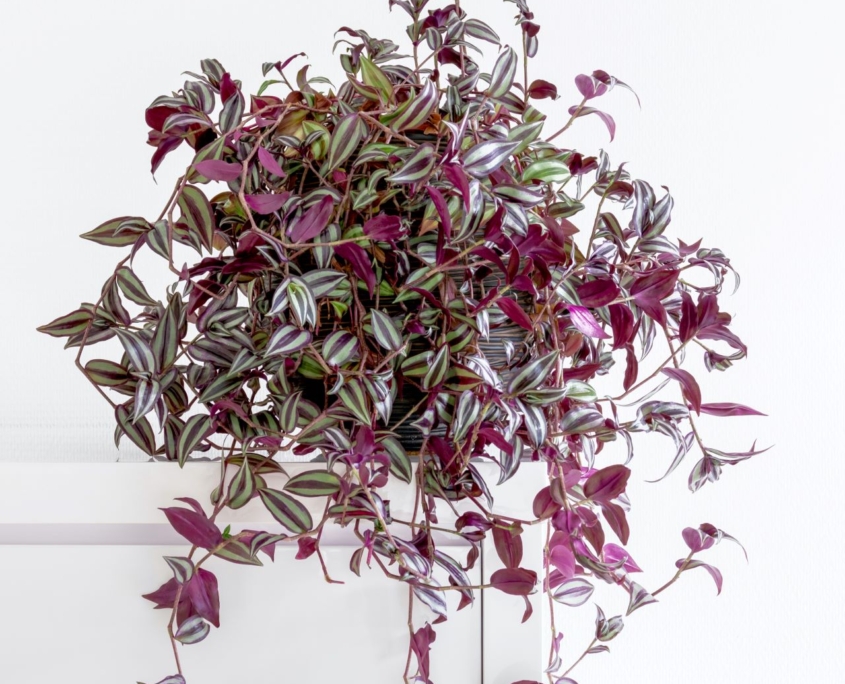Video: 2 Easy Methods to Revitalize OLD Potting Soil
Epic Gardening has two methods for rejuvenating and reusing soil to save money but still have an epic harvest. Learn them in this video!
Featured Products:
Epic Gardening has two methods for rejuvenating and reusing soil to save money but still have an epic harvest. Learn them in this video!
Featured Products:
Take a look at how the folks at Petitti Garden Centers use Espoma to keep their citrus plants happy and healthy!
Learn more about Petitti Garden Centers:
Website: https://www.petittigardencenter.com/
Facebook: https://www.facebook.com/petittigardencenters/
Instagram: https://www.instagram.com/gardeningwithpetittis/
Featured Products:

With the arrival of spring just around the corner, it’s time to learn how you can properly prepare your seeds for the best outcome possible! Seed starting is most commonly used by flower and vegetable farmers to get the best variety of plants while saving time and money. By allowing the seeds to germinate inside before transferring them to your outside garden, there is a greater chance of a successful outcome. Read more to learn how to get started!
Photo via @rebeccamaterasso on Instagram
1. Read the Packet
Seed starting allows you to get a head start on your warm weather gardening. When you purchase your desired seeds, the packet will instruct you when you can start your plants indoors and when you must move them outside. If you’re still unsure about specifics, you can double check with Epic Gardening’s guide to seed starting methods. Make sure to only start a project that is achievable within your space!
Photo via @jazzybutterflygarden on Instagram
2. Gather Your Supplies
You can develop a seed starter in any type of container that has drainage (some people even use egg shells!), but there are also kits that can be purchased to help you start. Once you have your seed starter tray, you’re going to need soil. We recommend our Organic Seed Starter Potting Mix.
Photo via @jeradtb on Instagram
3. Plant Your Seeds
Once the starter soil is in the container, the seeds will be pressed down into the soil or placed on top to be able to germinate (the seed packet should indicate how far under the soil the seed needs to be placed). You want to make sure that your seeds aren’t too compact in the tray, so be sure to add Vermiculite to help with loosening heavy soil for better root growth. If you’re a visual learner, check out this step-by-step video!
Photo via @sowinginsuburbia on Instagram
4. Label Your Seeds
You want to make sure that all of the seeds get labeled during the starter process so that you can identify them when it’s time to move them outside. Once the plants develop, it can be difficult to tell them apart while you transfer them. When you’re ready to move them, be sure to add our Bio-tone Starter Plus to the soil to help your new plants stay strong during the transfer process.
Photo via @living.life.zerowaste on Instagram
5. Double Check Everything
Ensure you know which types of seeds can be started indoors and when the correct time will be to relocate them outdoors. It’s important to always read the instructions as different seeds may require different care. For example, vegetable seeds have different care than flower seeds! Consulting The Old Farmer’s Almanac can help you figure out what’s best for your seeds if you’re still unsure.
Featured Products:
Kevin @Epic Gardening updates his seed-starting methods annually for better results, consistency, and health of his seedlings. Check out his NEW method featuring the help of some Espoma Organic Seed Starter.
Featured Products:
Are you ready to bring succulents into your home but not sure where to start? Laura from Garden Answer has you covered! In this video, she shares her top seven beginner-friendly indoor succulents and simple care tips to help them thrive. Laura recommends starting with a high-quality organic potting soil like Espoma Organic Cactus Mix and feeding with an organic fertilizer like Espoma Organic Cactus! Liquid Plant Food.
Learn more about Garden Answer here:
https://www.youtube.com/c/gardenanswer
https://www.facebook.com/gardenanswer
https://www.instagram.com/gardenanswer/
Featured Products:
Just because it’s winter doesn’t mean you can keep growing your indoor garden! The perfect way to turn it into an indoor jungle is to utilize trailing plants and high spaces around your home. These plants are characterized by their ability to grow long so they can gracefully drape down from bookshelves or windowsills. Here are some of the best ones to integrate:

1. Philodendron
If you’re a new plant parent, philodendron may be the best choice to start. There are over 200 different types of just this plant alone, so you have plenty of options. The most important things to remember are to place it in indirect sunlight and water about once a week. Be careful because direct sunlight can cause sunburn on their leaves.
2. Pothos
This long, leafy vine also prefers indirect sunlight and moist soil. One of the most common problems with this trailing plant is that it can get thirsty very easily, so make sure to look out for signs of a dry habitat such as crispy brown leaf tips. For optimal care, they should be kept in a room that is 70°-90ºF during the day and above 60º F at night. That means keep them away from any drafty windows for the remainder of winter!

3. String of Pearls
Another great starter trailing plant is the string of pearls. Unlike philodendron or pothos, this succulent thrives in bright light and can survive with less water. Be sure to check the soil and verify that it’s dried between waterings to avoid root rot from overwatering! If you’re ready to see this plant baby thrive in the coming growing season, stock up on indoor plant food and feed them every other month until spring and summer, then up their feeding schedule to once a month.

4. Inchplant
These beautiful purple leaves on top of trailing stems are perfect for hanging baskets! You need to make sure your inchplant is getting plenty of sun, because their overall health will decline if kept in low light for too long. The best way to help them thrive is to place them on a sunny windowsill.
5. Arrowhead Plant
This plant is known for its beautiful large leaves that resemble arrows. They prefer bright light and moderate watering in addition to well-draining, acidic soil. A great way to make sure this plant stays happy and healthy is to give it the quality soil it craves. Don’t forget to repot your plants at least once a year with our Organic Potting Mix.
Have you decided which of these plants you want hanging around yet? There are plenty of options to greenify your shelfs and ceiling space, and many of them are easy to care for! Plus, adding these plants now will mean lots of new, beautiful growth in the coming warmer months.
Featured Products:
Learn all about air plants as Laura from Garden Answer explains what they are and how to care for them.
Featured Products:
Watch Laura from Garden Answer show you how to grow citrus in containers!
Featured Products:
Laura from Garden Answer updates on her indoor Lemon & Lime trees she grows indoors. Watch for important care & growing tips!
Learn more about Garden Answer here:
https://www.youtube.com/c/gardenanswer
https://www.facebook.com/gardenanswer
https://www.instagram.com/gardenanswer/
Featured Products:
When planting onions from seed, Espoma Organic Seed Starter is a key component in promoting root growth and improving moisture retention. Check out how Garden Answer uses it!
Featured Products:
